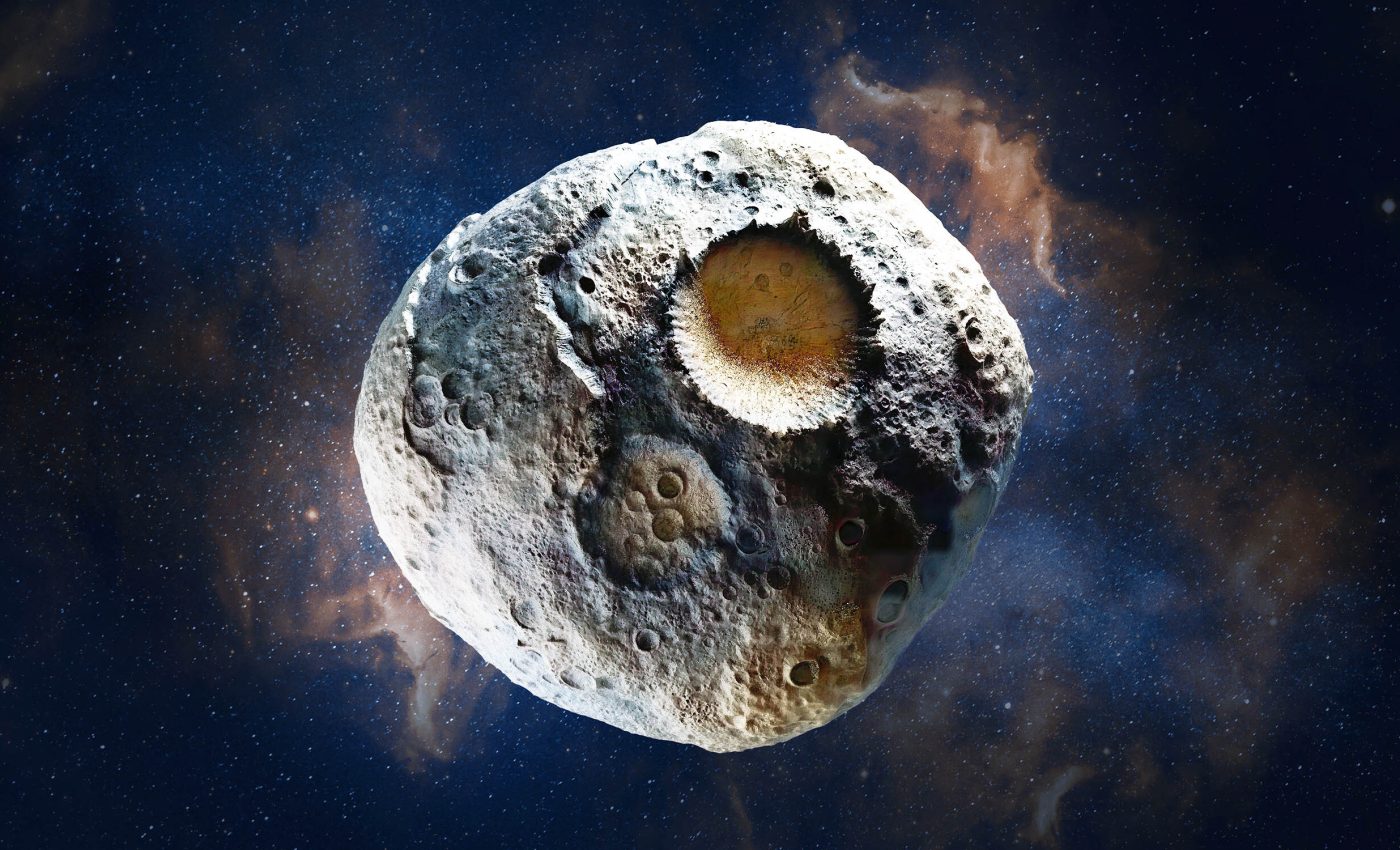
Webb telescope detects water on asteroid Psyche
Psyche, a tiny yet intriguing asteroid orbiting between Mars and Jupiter, has recently unveiled surprising secrets that have captivated the attention of scientists and space enthusiasts alike.
Through the use of advanced data gathered by NASA’s James Webb Space Telescope, a research team led by the Southwest Research Institute has confirmed the presence of hydroxyl molecules on Psyche’s surface, indicating the existence of hydrated minerals.
This discovery sheds light on the complex evolutionary history of Psyche. It also provides critical context for the NASA spacecraft currently making its long journey to the asteroid, with the promise of unlocking even more cosmic mysteries.
A metal marvel in the asteroid belt
At about 140 miles in diameter, Psyche stands out as one of the largest and most massive objects within the main asteroid belt, a region teeming with celestial bodies.
Previous observations have suggested that Psyche could be a dense, largely metallic remnant of a planet’s core, possibly left behind after a catastrophic collision that stripped away its outer layers, leaving only its metallic heart.
In October 2023, NASA embarked on an ambitious journey. The Psyche spacecraft was launched on a 2.2-billion-mile voyage expected to culminate in a rendezvous with the asteroid in August 2029.
“Using telescopes at different wavelengths of infrared light, the SwRI-led research will provide different but complementary information to what the Psyche spacecraft is designed to study,” said Dr. Tracy Becker, second author of the research published by the American Astronomical Society.
Unraveling the history of the solar system
Dr. Stephanie Jarmak, the paper’s lead author and researcher at the Center for Astrophysics, conducted much of this research while at SwRI. She noted that the story of asteroids is, in many ways, the story of our solar system.
“Our understanding of solar system evolution is closely tied to interpretations of asteroid composition, particularly the M-class asteroids that contain higher concentrations of metal,” said Dr. Jarmak.
“These asteroids were initially thought to be the exposed cores of differentiated planetesimals, derived from their spectral similarity to iron meteorites.”
Hydrated minerals: Clues to Psyche’s past
One of the most intriguing findings from the Webb data was the evidence of hydroxyl on Psyche’s surface, hinting at the presence of water.
The source of this hydration could be external, possibly from impactors. But if the hydration is native or endogenous, this would indicate that Psyche has a different evolutionary history than what current models have suggested.
“Asteroids are leftovers from the planetary formation process, so their compositions vary depending on where they formed in the solar nebula,” explained study co-author Dr. Anicia Arredondo.
“Hydration that is endogenous could suggest that Psyche is not the remnant core of a protoplanet. Instead, it could suggest that Psyche originated beyond the ‘snow line’ – the minimum distance from the Sun where protoplanetary disc temperatures are low enough for volatile compounds to condense into solids – before migrating to its current location in the outer main belt.”
Complex surface history of Psyche
Variability in the strength of the hydration features across observations implies a heterogeneous distribution of hydrated minerals on Psyche, representing a complex surface history.
This could potentially be explained by impacts from carbonaceous chondrite asteroids, which are known to be highly hydrated.
Understanding the composition and location of asteroids like Psyche not only informs us about the distribution and evolution of materials in our solar nebula but also provides insight into the presence and distribution of water in other solar systems.
Since water is essential for life, this research could help guide the search for potential life within our solar system and beyond.
Hydration is widespread in the asteroid belt
“The detection of hydration features on Psyche contributes to the growing body of evidence that M-class asteroids are a diverse population and that hydration is more widespread in the asteroid belt than previously thought,” concluded the researchers.
“This has significant implications for our understanding of water delivery to the inner solar system, potentially offering insights into the contribution of differentiated planetesimals.”
The Psyche mission is managed by NASA’s Jet Propulsion Laboratory and led by Arizona State University, with the Webb telescope developed in partnership with European and Canadian space agencies.
The study is published in the journal Planetary Science.
—–
Like what you read? Subscribe to our newsletter for engaging articles, exclusive content, and the latest updates.
Check us out on EarthSnap, a free app brought to you by Eric Ralls and Earth.com.
—–













